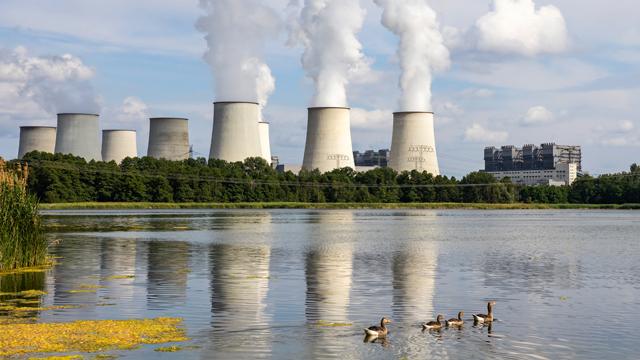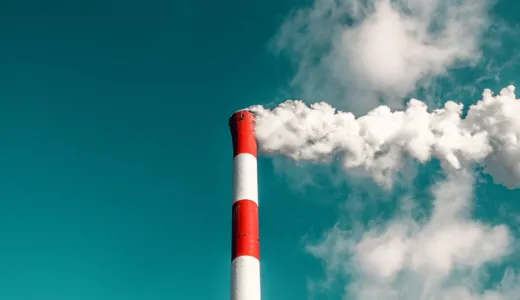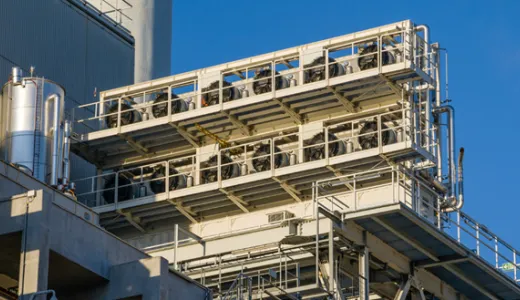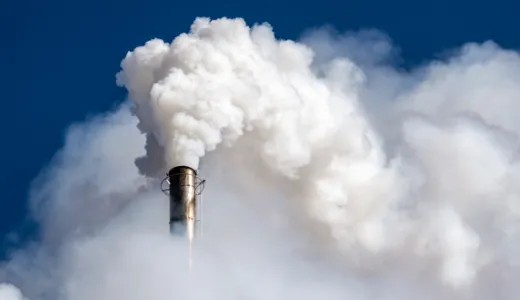What is carbon sequestration?
Carbon sequestration – the practice of removing carbon dioxide (CO2) from the atmosphere and storing it – is one of the many approaches being taken to tackle climate change. Find out why this method is being used and the different ways in which CO2 is being removed and stored.
Preventing the earth’s atmosphere from warming any further is taking a huge collective effort by humanity. From ending our dependency on carbon-emitting fuels to establishing a legally binding net zero emissions target by 2050, every potential solution is important if we’re to stop unprecedented climate change.
Alongside a transition to clean energy systems and decarbonising high-emission practices – such as construction or transport – humankind is making a concerted effort to remove CO2 from our atmospheres, by adapting the ways we construct, consume, travel and generate power. But methods like carbon sequestration show how we can work with the natural environment to tackle the climate crisis.

How does carbon sequestration work?
Carbon sequestration is the capturing, removal and permanent storage of CO2 from the earth’s atmosphere. It’s recognised as a key method for removing carbon from the earth’s atmosphere.
This is important, as around 45% of the CO2 emitted by humans remains in the atmosphere, which is a significant factor behind global warming. Carbon sequestration can prevent further emissions from contributing to the heating of the planet.
Carbon sequestration can happen in two basic forms: biologically or geologically. Also, while it’s being encouraged artificially through various biological and geological methods, it also happens naturally in the environment on the biggest scale.
What is biological carbon sequestration?
Biological carbon sequestration happens when CO2 is stored in the natural environment. This includes what are known as ‘carbon sinks’, such as forests, grasslands, soil, oceans and other bodies of water. This is also known as an ‘indirect’ or passive form of sequestration.
Forests
Forests and woodlands are considered one of the best forms of natural carbon sequestration. CO2 binds to plants during photosynthesis, exchanging it for oxygen as a purifying emission.
On average, forests store twice as much carbon as they emit, while an estimated 25% of global CO2 emissions are sequestered alongside forests in other vegetative forms, such as grasslands or rangelands (fields, prairies, shrublands etc.).
Protecting such natural environments is therefore crucial to ensuring carbon sinks capture CO2 effectively. Deforestation poses the biggest threat to this natural process, as does construction or intensive agriculture.
Soil
Through bogs, peat and swamps, CO2 can be captured and stored as carbonates. These carbonates build up over thousands of years as CO2 mixes with other mineral elements, such as calcium or magnesium. Eventually, CO2 is released from the earth, but not for a very long time – after more than 70,000 years in some cases.
Oceans
Aquatic environments and large bodies of water are also great absorbers of CO2. They absorb another estimated 25% of emitted CO2 from the earth’s atmosphere. This carbon is mostly held in the upper layers of the oceans. Too much, however, can acidify the water, posing a threat to the biodiversity that exists below – yet another reason to decarbonise our atmosphere.
What is geological carbon sequestration?
Geological carbon sequestration happens when CO2 is stored in places such as underground geological formations or rocks. This process is largely artificial or ‘direct’, representing an effective way of neutralising emissions put into human practices, such as manufacturing or construction.
It’s also largely technological as a result, with recent innovations showing CO2 being sequestered more effectively on larger scales. They include:
Graphene production
The production of graphene requires CO2 as a raw material. Although limited to certain industries, it’s used heavily in the production of the tech devices we use on a day-to-day basis, such smartphones or computer processors.
Engineered molecules
A fairly new science, scientists can change the shape of molecules to form new compounds by capturing CO2 from the air. In practice, this could present an efficient way of creating raw materials while reducing atmospheric carbon.
Carbon Capture and Storage (CCS)
CCS involves capturing CO2 that’s been produced by power generation or industrial activity, such as cement or steel making. This CO2 is then compressed and transported to deep underground facilities, where it’s injected into rock formations for permanent storage.
How can carbon sequestration be scaled?
We’re growing closer to developing technology that will allow carbon sequestration to happen on a massive scale. If CO2 can be captured during any activity that offsets emissions, it will help us become carbon neutral more quickly.
The simplest way to scaling carbon capture is by encouraging our natural environment to grow, while preserving what already exists. Reforesting, rewilding or the reclamation of agricultural land will allow carbon capture on the largest scales, as will removing pollutants from our seas, lakes and oceans.
Last updated: 27 Mar 2024
The information in this article is intended as a factual explainer and does not necessarily reflect National Grid's strategic direction or current business activities.



